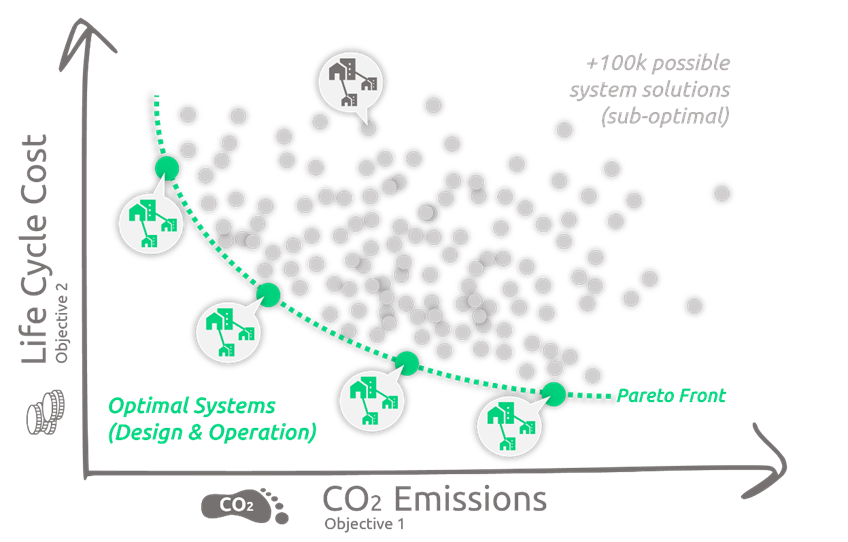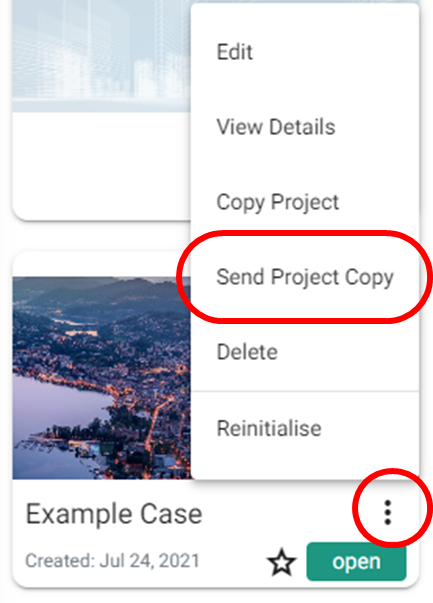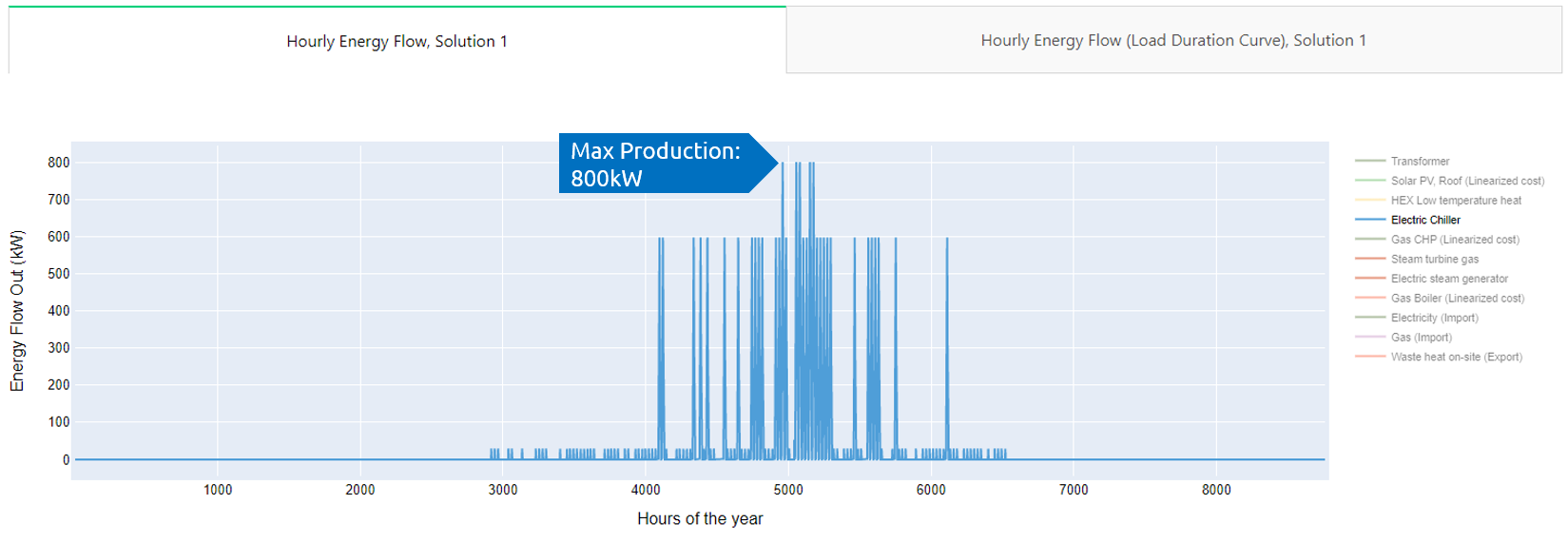Questions
Our senior software development Engineer, Youssef Sherif, answers a few questions that might have popped into your mind!
What are the biggest challenges when planning a complex energy system? And why do we need Optimization?
Planning complex energy systems with sector coupling is more challenging than typical centralized energy systems. In terms of modeling, the degrees of freedom have become overwhelming. As a result, only simulating a few sets of system designs (i.e., rule-based search) to determine the optimal system design and operation runs the risk of missing out on optimal solutions. Although one could guarantee optimality by potentially iterating all possible system designs (i.e., brute-force search), such an approach is confined to small-scale systems because the number of possible solutions grows exponentially as the site grows.
To identify optimal solutions, Sympheny's solver uses Mathematical Optimization. Relative to traditional methods, our solution not only guarantees optimality of results but also effectively handles large-scale systems. Sympheny is a powerful energy system optimization tool that streamlined the process of creating mathematical models and solving it, this allows our users to focus on designing the best system possible.
What is Mathematical Optimization? And how does Sympheny apply it?
Mathematical Optimization is a sophisticated analytical tool that allows users to describe complex real-world problems in a mathematical model and find a solution that optimizes an objective while adhering to user-defined constraints.It has a wide range of applications in manufacturing, scheduling, transportation, economics, control engineering, marketing, policy modeling, etc. Sympheny uses Mathematical Optimization to identify cost-effective and emission-minimizing system designs and operation strategies for new and existing sites.

What is required to prepare and solve an optimization problem?
An optimization problem or model consists of the following elements:
Variables (e.g., technology capacity variables, production per time step, binary variables (install or not install a technology))
Constraints and bounds (e.g., max production per time-step, max capacity)
Objective function (e.g., total cost/profit, total emissions)
As mentioned above, a typical optimization problem starts by defining the variables in the model. In the case of Sympheny, the variables are technologies, energy carriers, energy networks, etc. Then, constraints of these variables, such as maximum capacity, seasonal operation, and charging/discharging behaviors, are defined. Finally, the objective functions are set.
Once the optimization problem is defined, it is solved mathematically to find the best set of values for all variables that minimize/maximize the objective function while satisfying all constraints in the model.
All projects can be easily shared with another user by selecting the options menu on the three dots button and then click on Send Project Copy.


Within a multiple input system, the priority is a variable of the optimization so the optimization engine will choose which is the most favorable input to reach the objectives of the optimization.
When it comes to the best solution in terms of minimizing CO2, it means that it will always favor renewable electricity over grid electricity (assuming the grid electricity has a higher CO2 intensity than the renewable electricity, which in most of the cases is true, except e.g. if you have a very clean electricity from the grid and an on-site production with PV and batteries with high grey energy).
When it comes to the best solution in terms of minimizing Life-Cycle Cost, it means the optimization will favor PV when the price of buying the grid's electricity is higher than selling renewable electricity, it will maximize the internal use of renewable electricity automatically, and will choose renewable electricity (from your PV) over grid electricity for the Heat Pump.
If installing a PV system is too expensive to be favored by optimization while being necessary in your system design, it is possible to force install this technology under the “OPTIMIZATION OPTIONS” tab.

Yes, it’s possible to use the waste heat of a cooling technology candidate as an input for another technology (e.g., Heat Pump) candidate.
This is because the Optimal Capacity given in the system diagram represents the capacity of the (selected) Primary Output, while the output given in the results plot “Energy Flow Out” is the combined output.
In the example below, the Chiller Candidate is dimensioned to an Optimal Capacity of 420 kW, but the maximal production in the results plot is 800 kWh/h for the combined outputs (Cooling and Waste Heat):


